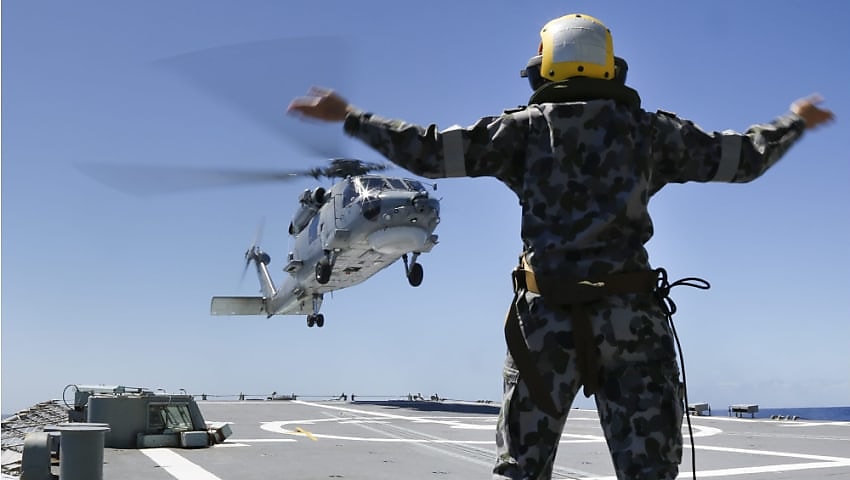The crew of the HMAS Hobart has been fine-tuning its skill set, having recently undergone training on landing a Seahawk on a warship — at night.
To continue reading the rest of this article, please log in.
Create free account to get unlimited news articles and more!
The training saw the crew don night vision goggles in an environment that was pitch black with strong winds, no moon, and a ship that was pitching and rolling with the waves.
“It was extremely challenging,” said Navy pilot Lieutenant Rhiannon Thompson.
“You quickly start to see why it is so important for pilots to maintain and refine those fundamental skills.”
Joining LEUT Thompson in the helicopter’s cockpit was aviation warfare officer Sub Lieutenant Alexander McLauchlan.
SBLT McLauchlan is generally in charge of mission command for surface and sub-surface warfare, making the helicopter exercise a significant change of pace. However, he acknowledged that co-pilot duties are equally important.
“It’s satisfying when you get to do it,” said SBLT McLauchlan.
“I have to monitor the mission and make sure we achieve what we need to do, whether that is finding and deterring a submarine or surface vessel.”
Together, LEUT Thompson and SBLT McLauchlan used the onboard instruments as well as their own judgement to calculate the necessary height, speed, rate of descent and heading.
“You need to be scanning physically with your eyes very quickly through all of those things to get that information into your head to digest it, to then translate that into your hands and feet to move the helicopter,” said LEUT Thompson.
On the warship itself, aviation technician aircraft Leading Seaman Julijan Pavin was directing the helicopter where to land. He was training as a flight deck marshaller at the time.
“It’s a good feeling when the aircraft comes into land because you are right in the centre of it,” said LS Pavin.
It comes after the US State Department last month greenlit the RAN placing a second order for 12 MH-60R Seahawk/Romeo helicopters in a deal tipped to be worth over $2.5 billion. The new aircraft will build on the 24 acquired between 2013–16 and would take the total size of the fleet to 36.
The federal government is also mulling a purchase of 40 Black Hawks to help replace its troubled fleet of 47 Taipans.
The deal for Black Hawks, however, is still unconfirmed, with Defence Minister Richard Marles arguing the commitment from the previous federal government was “pretty fuzzy”.
“A process is underway that is evaluating that capability in terms of what we have now and what we need in the future. I’m not going to pre-empt it now,” he said, referencing the new federal government’s upcoming Defence Strategic Review.
Last year, the former Morrison government went as far as to send a letter of request to the United States so Australia could purchase UH-60M Black Hawks for AU$2.79 billion.

 Login
Login







